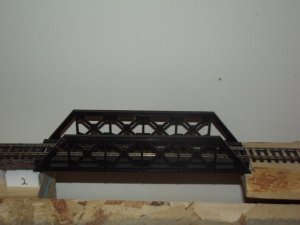[video=youtube_share;ebrw1iquml4]https://youtu.be/ebrw1iquml4[/video]Hi, everybody. I recently posted a pic of my layout in the "Showin' Off" section of this forum but "showin' off" seems a bit of a heavy handed phrase for a beginner like myself. I do, however, want to share pics and vids of my progress as I build my fictional HO scale railroad.
In this first vid you can see I will need some kind of bridge so the upper track can pass over the lower. I would love some suggestions on building such a bridge.
Thanks, all
Paul
In this first vid you can see I will need some kind of bridge so the upper track can pass over the lower. I would love some suggestions on building such a bridge.
Thanks, all
Paul


